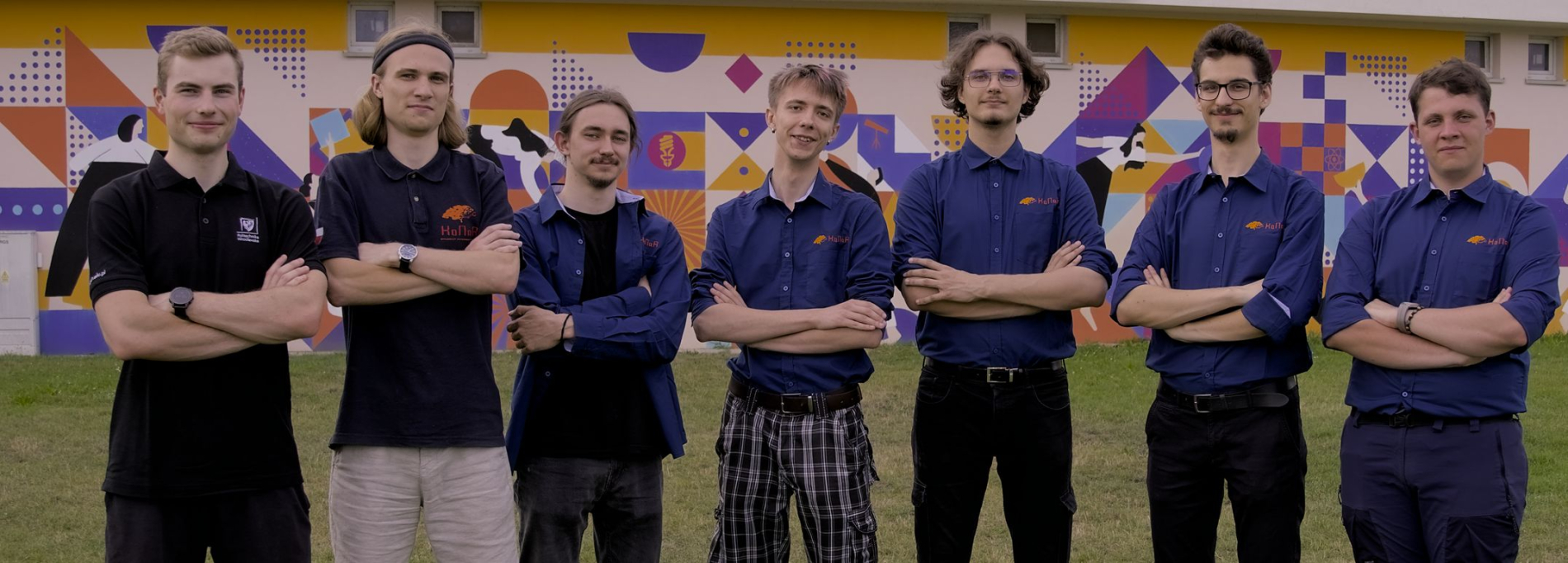YOUR BROWSER IS OUT-OF-DATE.
We have detected that you are using an outdated browser. Our service may not work properly for you. We recommend upgrading or switching to another browser.
Date: 08.01.2025 Category: general news, student activity
 Students from the WrocławTech are working on a robotic unmanned boat to cross the Atlantic Ocean using renewable energy sources. The voyage will begin in November 2025, but the first tests on the Oder are already scheduled for March.
Students from the WrocławTech are working on a robotic unmanned boat to cross the Atlantic Ocean using renewable energy sources. The voyage will begin in November 2025, but the first tests on the Oder are already scheduled for March.
Crossing the Atlantic is the main task of the Microtransat competition announced in 2005, which aims to design and build an unmanned sailboat of less than 2.4m in length, capable of crossing the ocean. To date, more than 30 attempts have been made to cross the Atlantic, but only one has been successful. In 2018, the SB Met boat, built by Norwegian company Offshore Sensing, covered the route from Newfoundland to the Irish coast in 79 days. The designs entered in the competition can compete in two categories - autonomous, which does not allow any human interaction with the boat, and robotic, which allows various types of data to be sent to the boat, including commands to change course, among others. It is in the latter category that our students want to compete. Their boat is to cover the route from the Canary Islands to the Caribbean.
Students from the KoNaR Robotics Research Group are primarily involved with mobile robots, with which they have had much success in international competitions. However, they are not afraid of new challenges. In June, they took third place in the CanSat International Space Probe Competition in the USA, and now they have decided to tackle the turbulent waters of the Atlantic.
- ‘We have a lot of experience with electronics, robotics and automation, as well as sailing, because most of the team is certified, so we thought it was worth a try,’ - says Wojciech Bohdan, project coordinator. - ‘Our sailing experience will certainly come in handy during the testing phase to check and assess whether the boat will actually be able to control the direction of the swim,’ he adds.

However, in their work on designing the hull, students from KoNaR have teamed up with PWr Solar Boat Team, which specialises in building this type of structure. - ‘We have already prepared a digital design of the boat. It will be about a metre long, so it will be easier to transport. However, it is actually difficult to say what size is optimal in this case. There have already been boats longer and shorter than ours in the competition, but none have managed to cover the entire distance. Those that achieved good results were only about a metre long,’ explains Wojciech Bohdan.
The hull of the boat will be made of stainless steel, as will the centreboard fin, making the whole structure much more stable and able to lift off even in the event of a capsize. Meanwhile, the small sail that will be on the bow of the boat will be made of fibreglass and composites. The boat will also be equipped with four sets of photovoltaic panels and batteries to provide power for the entire electronic system. These will operate independently of each other, so the failure of one set will not prevent the rest of the system from operating. - We are currently working on a suitable battery that will autonomously draw energy from the panel, store it and transfer it to the boat. According to preliminary calculations, it takes about three days to charge one such battery and the stored energy allows for two to four weeks of operation. With four sets and good conditions, this gives us up to several months of energy,’ - explains Jakub Lemanski, Embedded programmer on the project. - ‘We also want to measure the performance of the photovoltaic panels during the cruise,’ he adds.
The boat will also be equipped with a satellite communication system, a GPS system that will enable it to track and report its position with minute-level accuracy (as required by the competition organisers), as well as possible course corrections, and a camera that automatically takes pictures of the surroundings.
It can take between two and five months to cover the route from the Canary Islands to the Caribbean, depending on the strength of the wind. During this time, the boat will have to survive difficult weather conditions - storms or gusty winds - and avoid the most popular shipping lanes. - If you stay away from them, a collision with another vessel is virtually impossible. Fishing boats, on the other hand, can be a danger, as our boat can accidentally become entangled in the extensive nets pulled by the vessels. Many previous attempts have ended this way’. - Wojciech Bohdan explains.
The cost of building the boat itself is around £15,000-20,000, while the whole project is expected to cost around £50,000. The students plan to have the structure ready within three months and, if conditions allow, the first tests will be conducted on the Oder River in March 2025. After that, the team will move to the Masurian Lake District, and eventually to the area around Hel, where the boat will undergo further tests. The students have already secured funding for their project from the Manus Foundation's Propeller programme, they are also working with local companies and are constantly looking for more partners.
Our site uses cookies. By continuing to browse the site you agree to our use of cookies in accordance with current browser settings. You can change at any time.